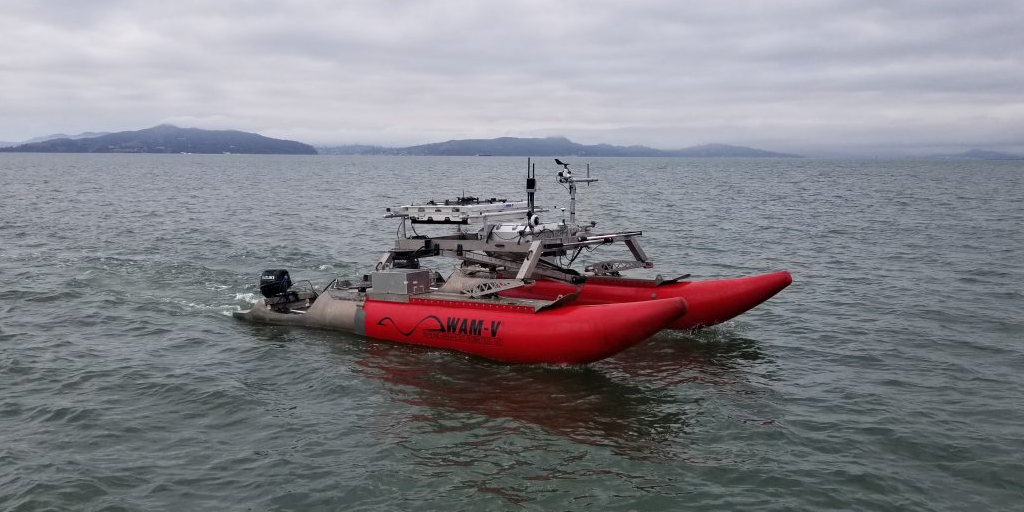Marine Advanced Robotics Supports DOE-Funded Offshore Wind Monitoring Project

The Woods Hole Oceanographic Institution (WHOI) recently announced it has received $750,000 in funding from the U.S. Department of Energy (DOE) to develop next‐generation autonomous robotic technology for environmental monitoring of the ecosystem at potential U.S. West Coast wind energy development areas. Recent OPT acquisition Marine Advanced Robotics (MAR) is one of the proposed project’s principal technology providers.
WHOI confirmed that the MAR WAM-V® (Wave Adaptive Modular Vessel) autonomous surface vessels (ASVs) are a key piece of technology for the development of a scalable non-intrusive robotic system that will conduct environmental monitoring of marine organisms and the seafloor.
“The WAM-V is an ideal platform to capture high-quality data with minimal disruption to the marine environment,” said Mark Gundersen, OPT VP of Autonomous Vehicles. “Our lightweight ASV is a stable platform for topside and subsurface monitoring equipment while being highly maneuverable and inobtrusive to sea life.”
In addition to WAM-V ASVs, WHOI and the University of Sydney’s Australian Centre for Field Robotics (ACFR) are developing key components. The project’s goal is a successfully developed system to be commercialized to serve the offshore wind industry.
“This is exactly the sort of project OPT aims to play a pivotal role in as the United States ramps up its investment in and commitment to offshore wind energy production. With a U.S. goal of developing 30 gigawatts of offshore wind power by 2030, there are numerous sites under consideration that will require extensive sea floor mapping, monitoring of marine and coastal habitats, and maritime domain awareness safety and security surveillance,” said Philipp Stratmann, OPT President, and CEO. “OPT and MAR are poised to contribute key autonomous and environmentally friendly equipment and services to advance development of the country’s next-generation energy infrastructure.”
Find out more about WAM-V ASVs on the Marine Advance Robotics website.